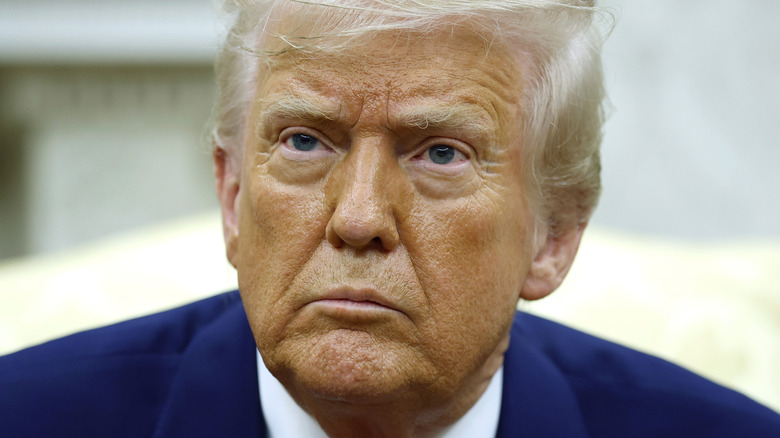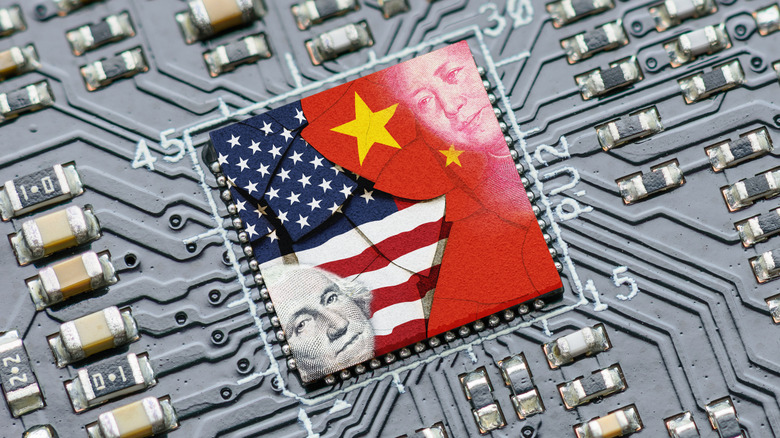Most Online Shoppers Have No Clue How Expensive 'Bargain' Tech Imports Are About To Get
One of the more affordable methods of getting tech at discount prices has traditionally been to buy it online. Brick-and-mortar stores like Best Buy, Walmart, and Micro Center occasionally offer some tempting sales, but it's hard to compete with a global market that can ship you the component you need from anywhere in the world. It appears that the entire tech landscape is about to change, however.
Prices on 'bargain' tech imports, including everything from earbuds and smart devices to computer components and gaming hardware, are likely about to surge due to the new U.S. Tariff policy implemented by President Donald J. Trump. His most recent executive order was issued on April 9, and has placed a 90-day suspension on a majority of the tariffs that he recently put in place, with one notable exception: China.
While goods shipped from many of the United States' other trading partners will be getting a three-month reprieve, Chinese goods will see increased import fees–dramatically driving up the importer's costs. This, in turn, is likely to drive up their market price. These Tariffs will affect several industries, including several car brands and tool manufacturers like Harbor Freight, but it's going to be a particularly big issue for tech lovers. A substantial portion of the tech goods on the market are either made in China or made with components that were made in China.
How will the tariffs drive up costs?
According to Trump's most recent executive order, "increase the ad valorem rate of duty set forth in section 2(c)(i) of Executive Order 14256 of April 2, 2025 (Further Amendment to Duties Addressing the Synthetic Opioid Supply Chain in the People's Republic of China as Applied to Low-Value Imports), as modified by the Executive Order dated April 8, 2025, from 90 percent to 120 percent."
This is a bit heavy on the legal-ese, but in short, it means that starting May 2, packages valued at $800 or less that are shipped from China to the U.S. will be subject to a 120% tariff. It doesn't end there, though. The order also states that there will be an "increase the per postal item containing goods [...] from 150 dollars to 200 dollars," which will take effect on June 1.
So, what does this mean from a consumer's point of view? Imagine you order a toaster from a Chinese manufacturer that costs $100. Starting in June, you'll need to pay a flat $200 in postal import fees and $120 in tariff fees on top of the purchase price, meaning you'll need to pay a grand total of $420. This applies to cheaper items as well. Small, individual parts that may cost as little as $5, such as those used in a 3D printer for instance, will now cost $211 to import individually. Of course, most goods aren't purchased by consumers directly from Chinese manufacturers. These items are usually purchased in bulk by American retailers who then sell them domestically, but the tariffs will be affecting them as well, which will, in turn, drive up costs for American consumers.
What tech is made in China?
So now that you know how these tariffs will affect Chinese-made goods, you might be interested in learning a bit more about which tech items are made in China. The short answer? A lot of them.
The New York Times reported that factories in China produce more goods than those operating in the U.S., Japan, South Korea, and the U.K. combined, also going on to state that China exports 77% of the children's toys sold in the states. According to the BBC, "The biggest category of US imports from China is smartphones, accounting for 9% of the total. A large proportion of these smartphones are made in China for Apple, a US-based multinational." This has resulted in Apple and several other companies taking a major hit in the stock market.
Bloomberg reports that the top 10 U.S. imports from China ranked by market share in 2024 were: game consoles (86%), PC monitors (79%), toys (76%), smartphones (73%), lithium-ion batteries (70%), laptops (66%), plastics (38%), wireless headphones (14%), computer parts (9%), and medicine (7%). Trump's tariffs have already caused a delay in Nintendo Switch 2 pre-orders for this very reason. So, it seems fairly clear that the tech sector is likely to be hit harder by these tariffs than any other market.
Many American-made products contain Chinese components
You might think that you can get around these tariffs by purchasing American-made products, but that might not be as simple as you think. Many items that are purportedly made in America are actually assembled in America using parts from all over the world–including China. These components still need to be imported and will drive up the manufacturer's costs, thereby pressuring them to raise the price that they charge the consumer.
One of the biggest issues in the tech sector is semiconductors. These conductive elements are essential in the manufacture of microchips used in virtually all computerized electronics. According to the Observatory of Economic Complexity, China exported $48.4 billion in semiconductor devices in 2024, making it the country's 8th most exported product. This is even higher than the numbers that Citigroup reported in 2023, stating that China was "the world's largest semiconductor market, representing 31.4% of worldwide final sales or U.S. $180 billion out of U.S. $574 billion in 2022."
The U.S. has its own semiconductor manufacturing infrastructure, but it may struggle to keep up with the tech industry's demands, and supply shortages during the pandemic have already shown how this can dramatically affect the price of electronics.
Raw materials present another problem
Another problem to consider is the raw materials that these components are made of. Even if tech companies in the U.S. were able to shift all of their manufacturing state-side, they would still need precious metals such as lithium to make them. According to Politico, "China accounts for 63% of the world's rare earth mining, 85% of rare earth processing, and 92% of rare earth magnet production."
Aluminum, iron, silicon, copper, cobalt, and nickel are all important materials for constructing tech goods. However, lithium might strike a particularly brutal blow to tech prices, since the lithium-ion batteries that power most modern cordless electronics require the precious metal in order to be manufactured.
China's lithium reserves have recently risen to 16.5% of total global production after discovering ore-rich mines in the Xikunsong-Pan-Ganzi region in Tibet, as well as lithium salt lakes in the Qinghai-Tibet Plateau. This is pretty substantial when you compare it to the United States' paltry 3%. Once again, limited domestic supply and high tariffs on imports can easily lead to a spike in prices, even when most of the components are manufactured in the U.S.




